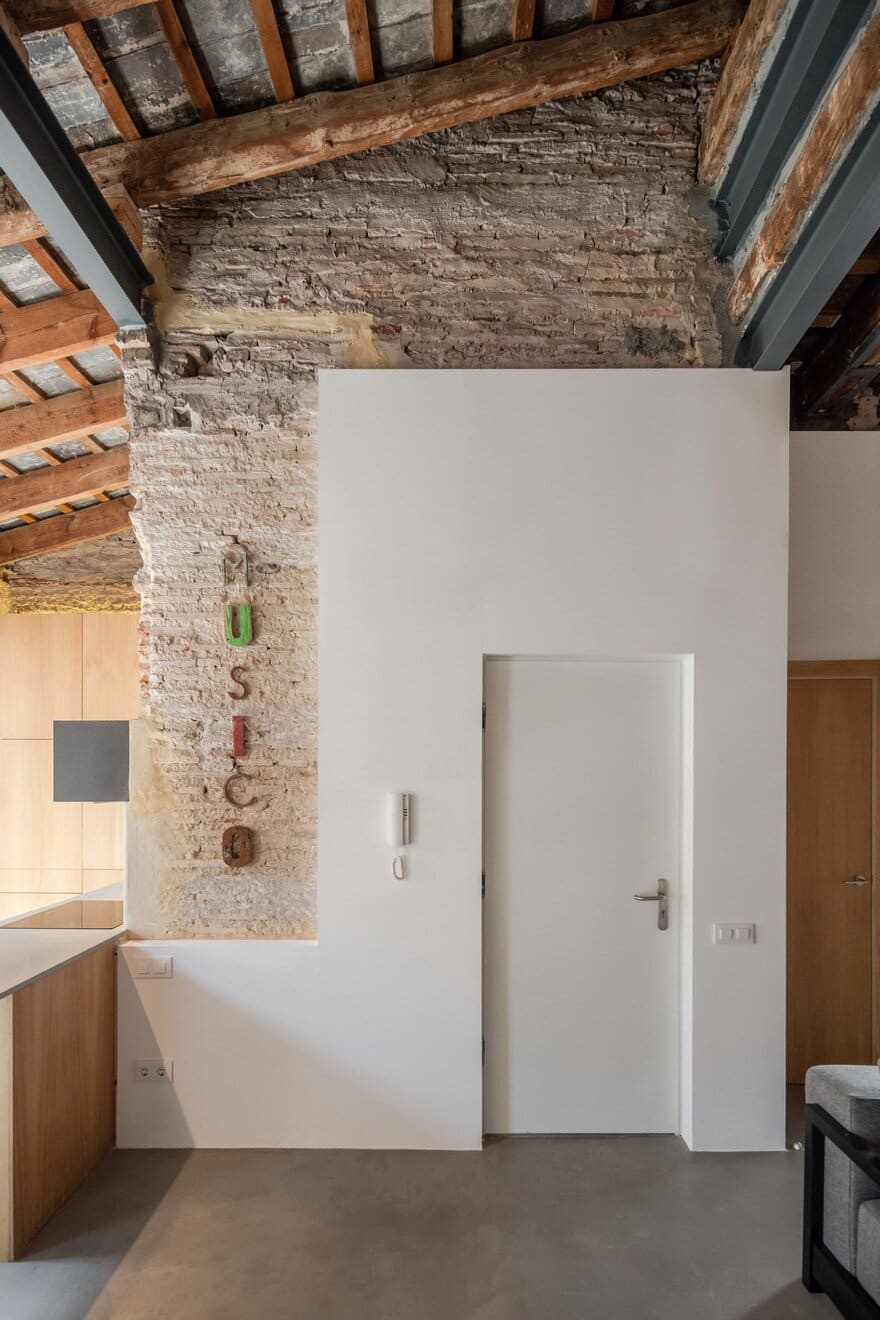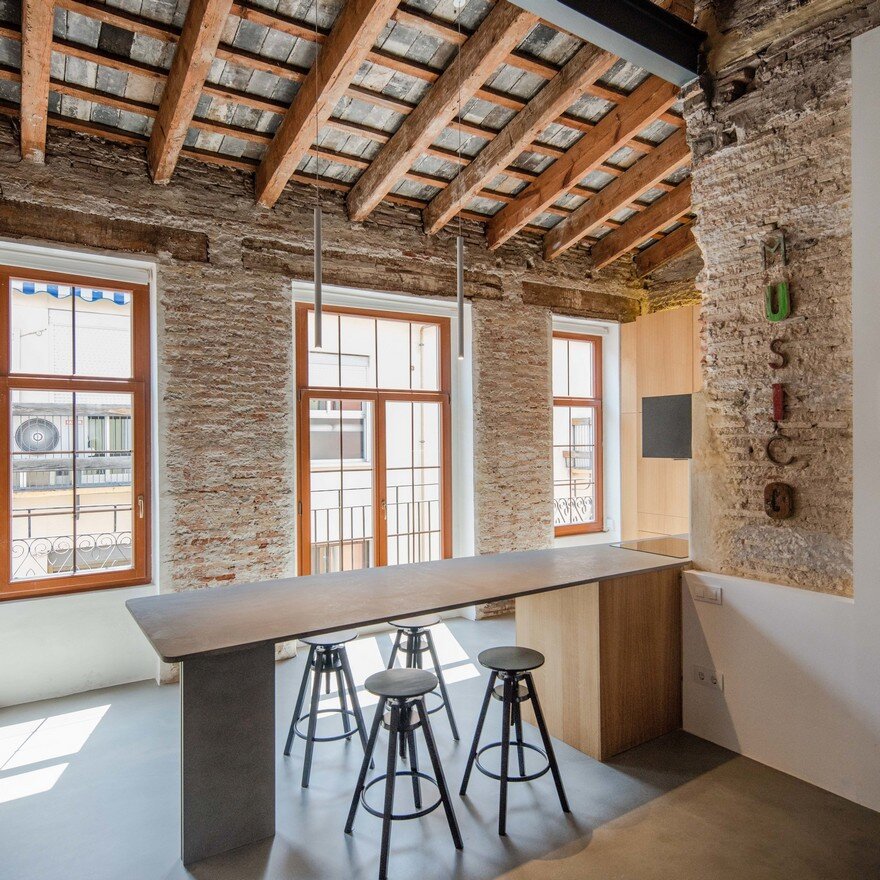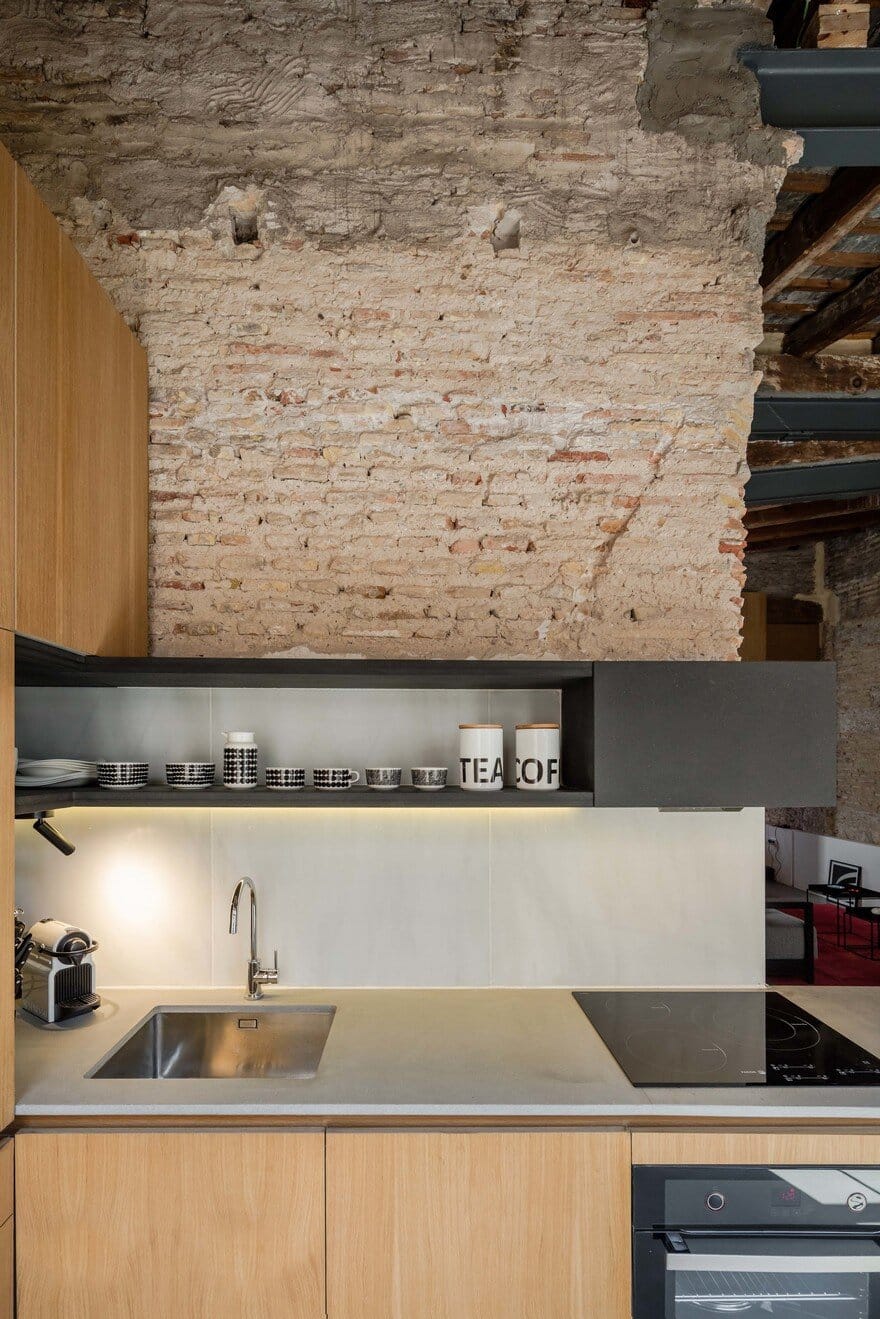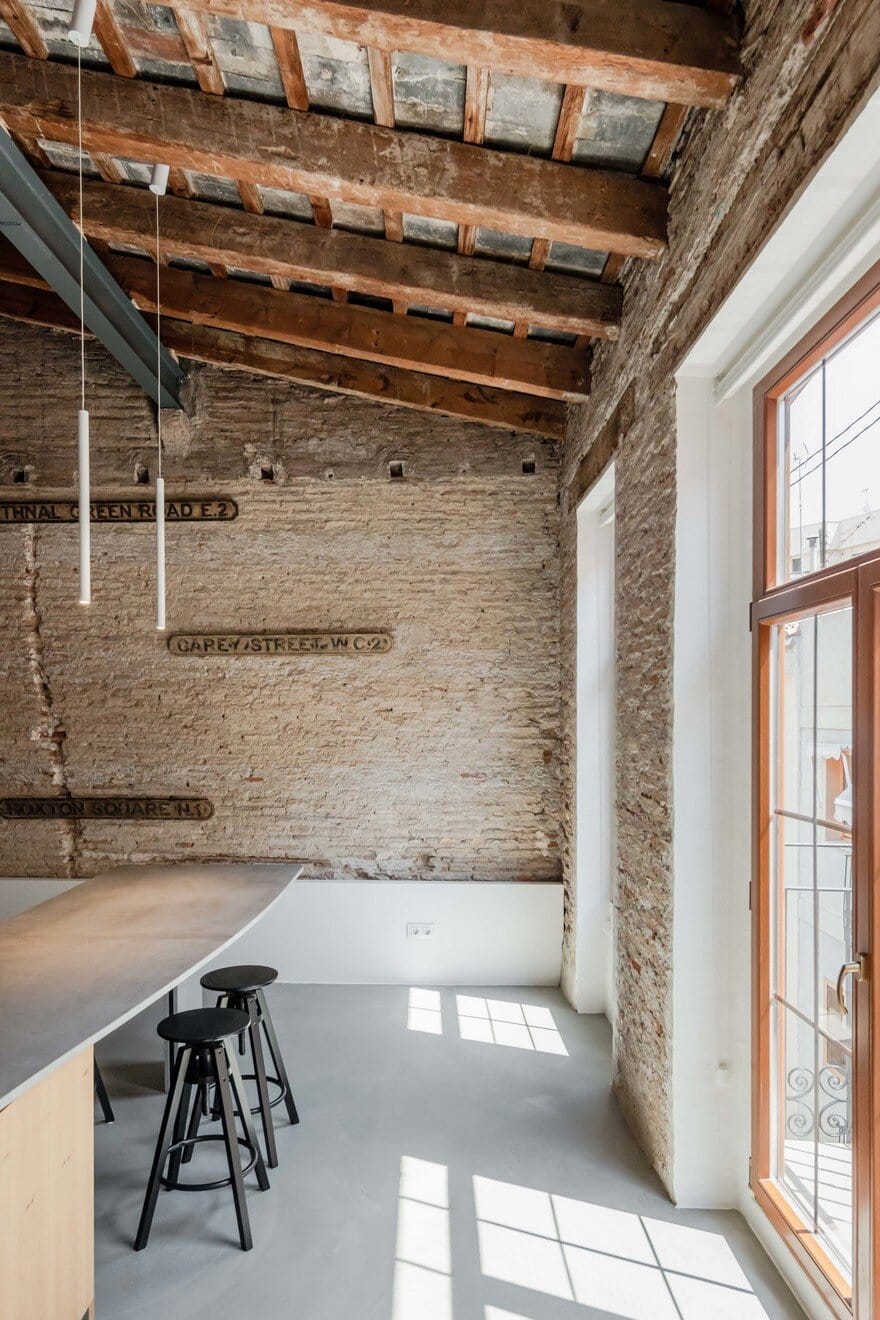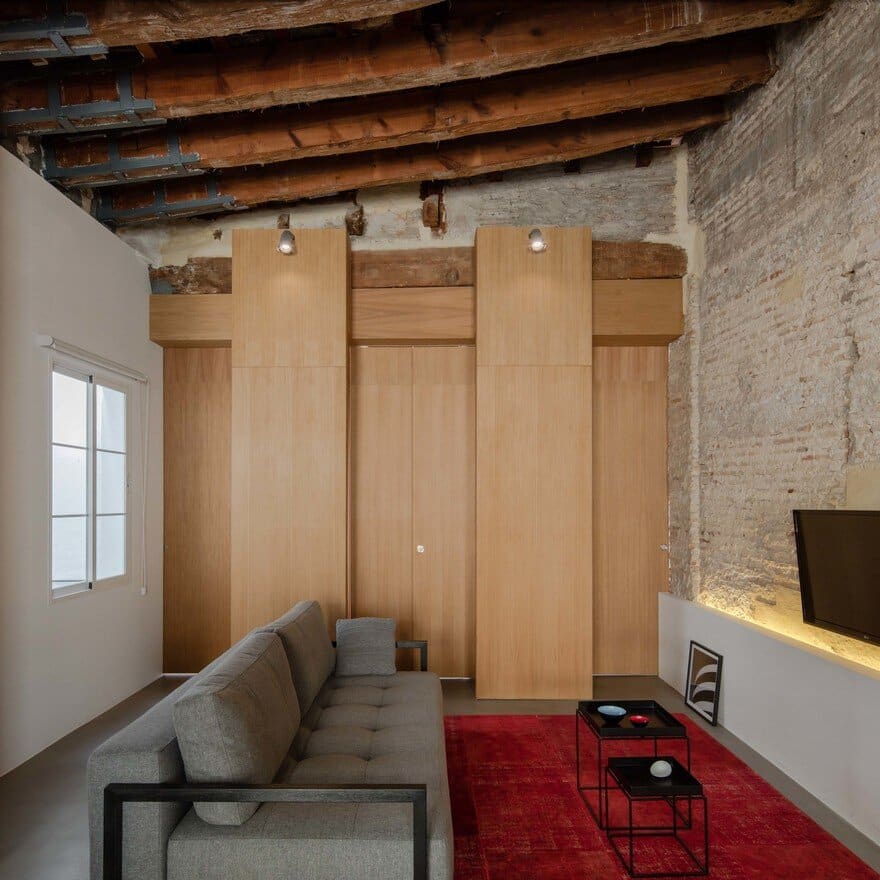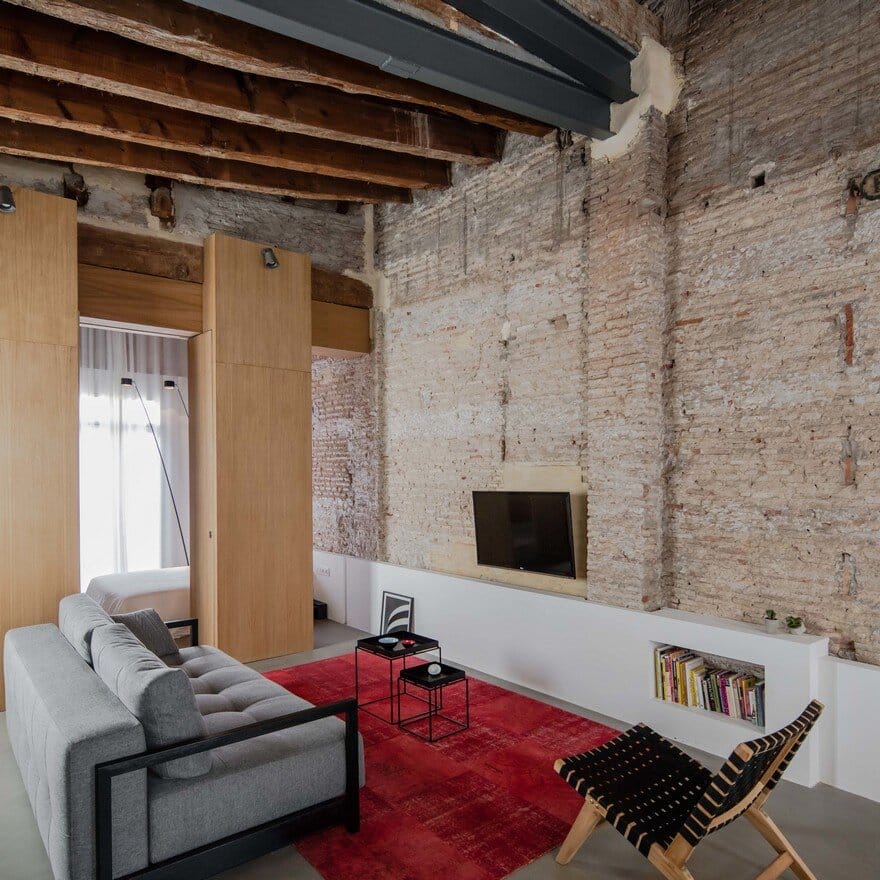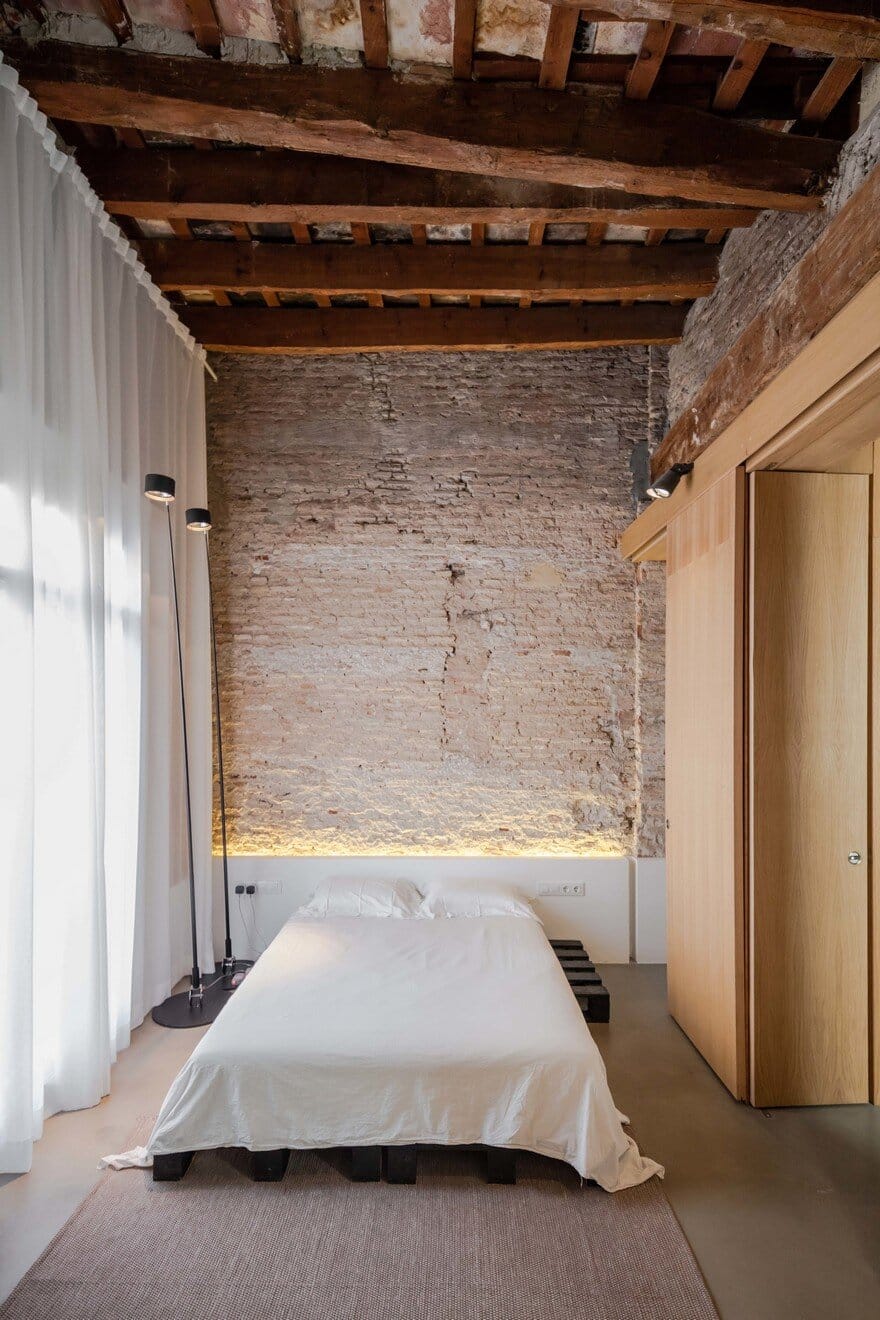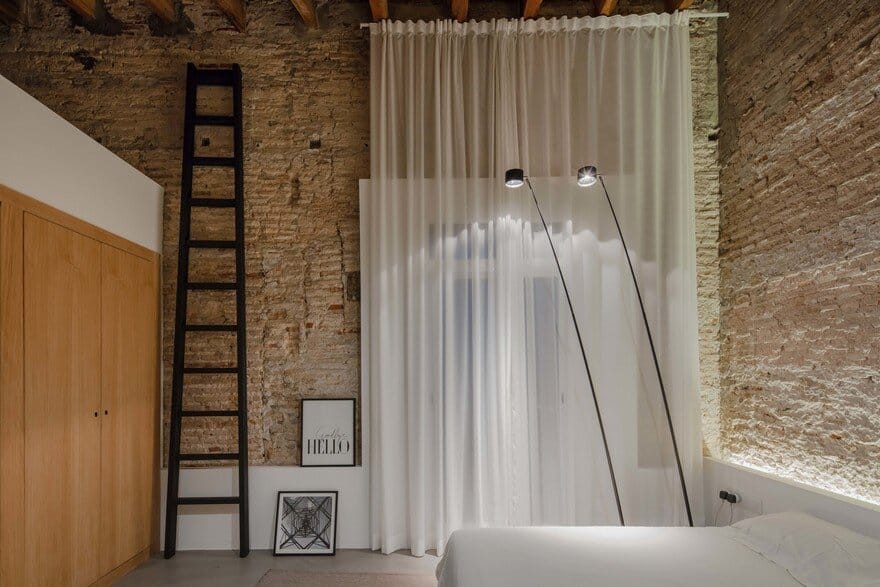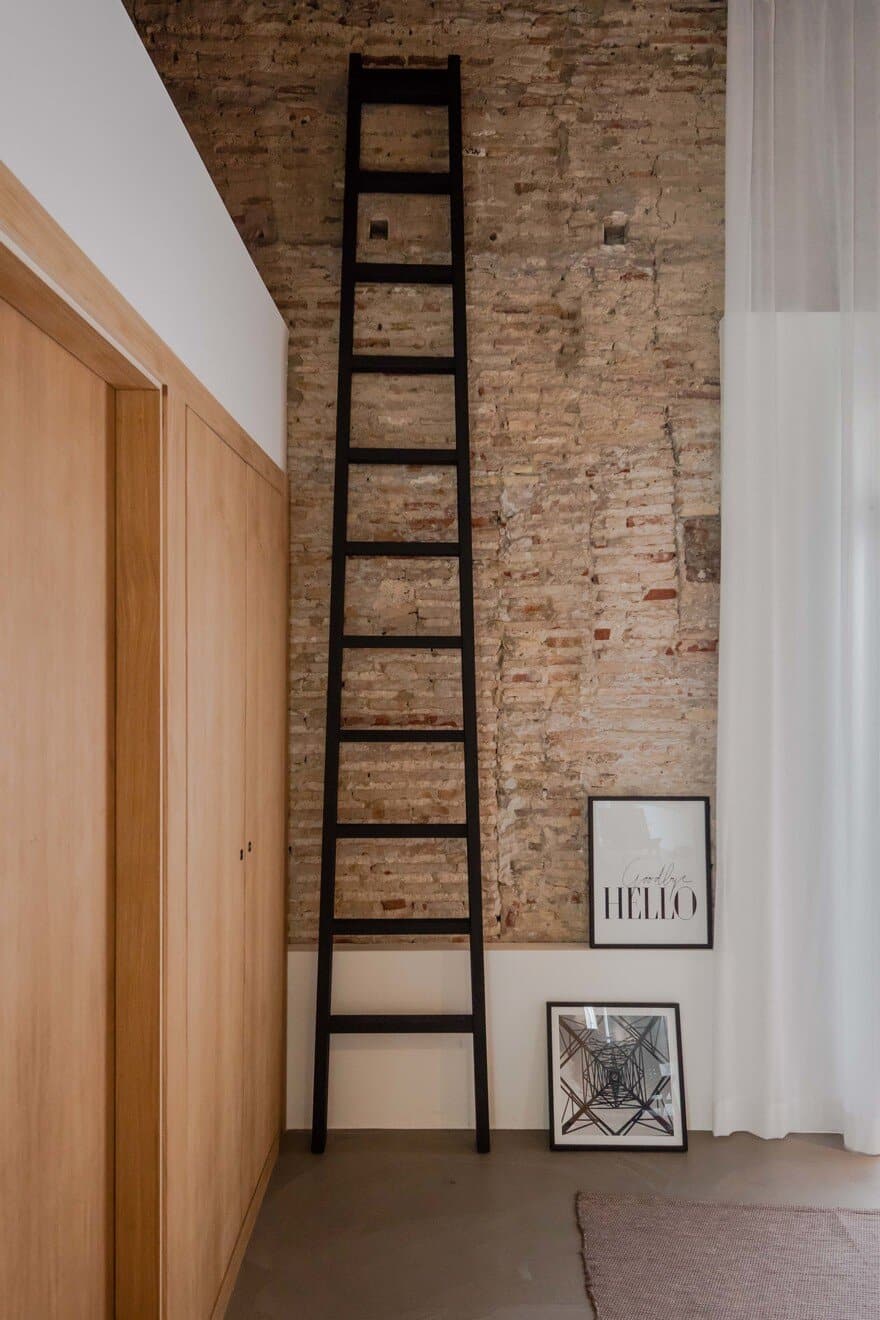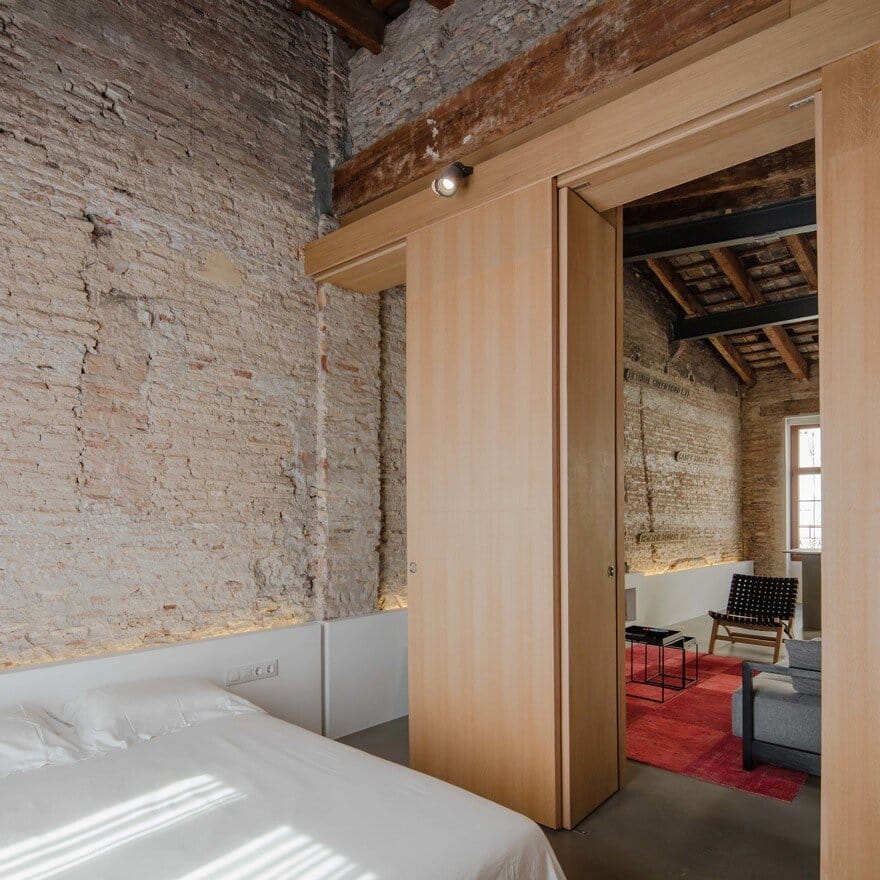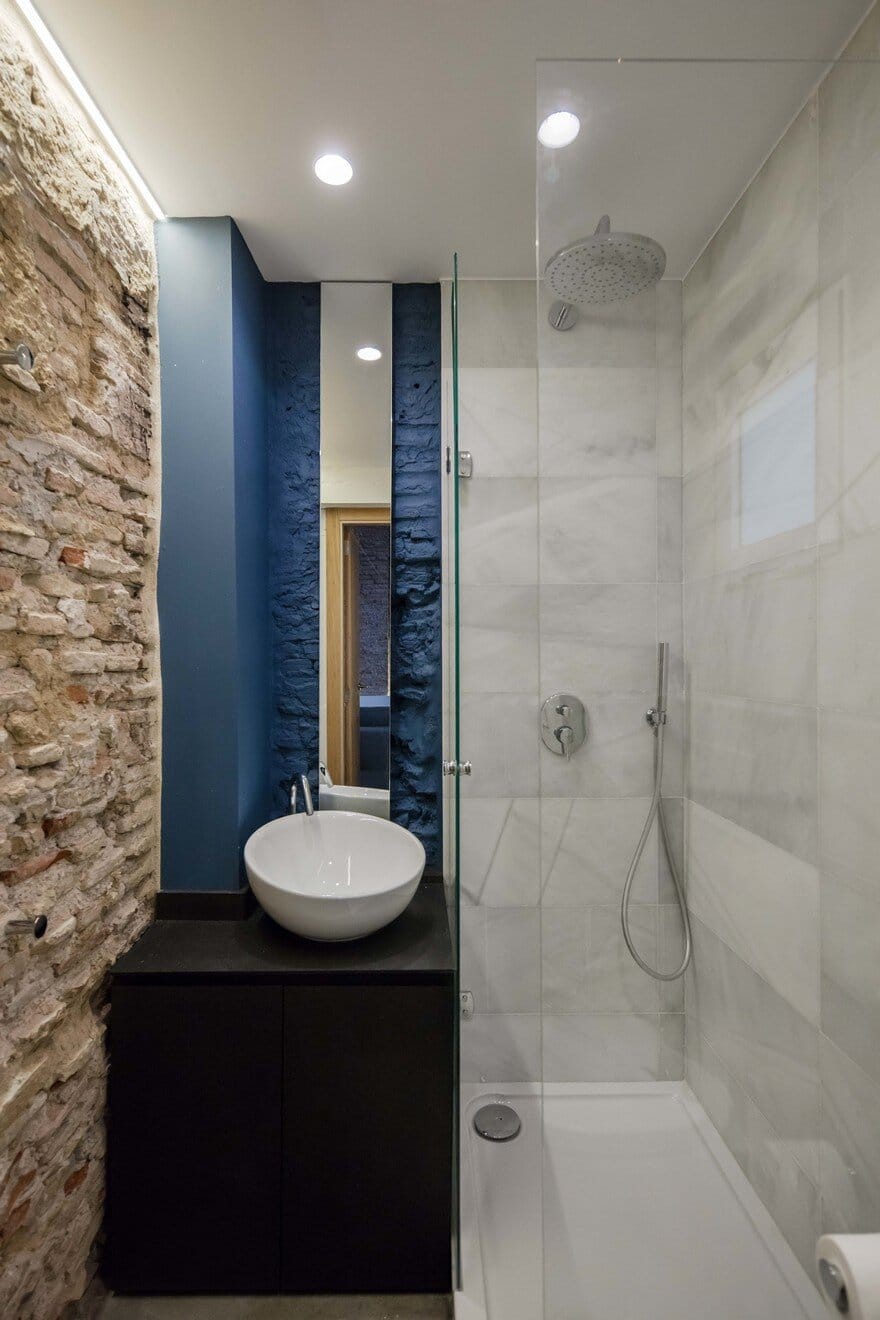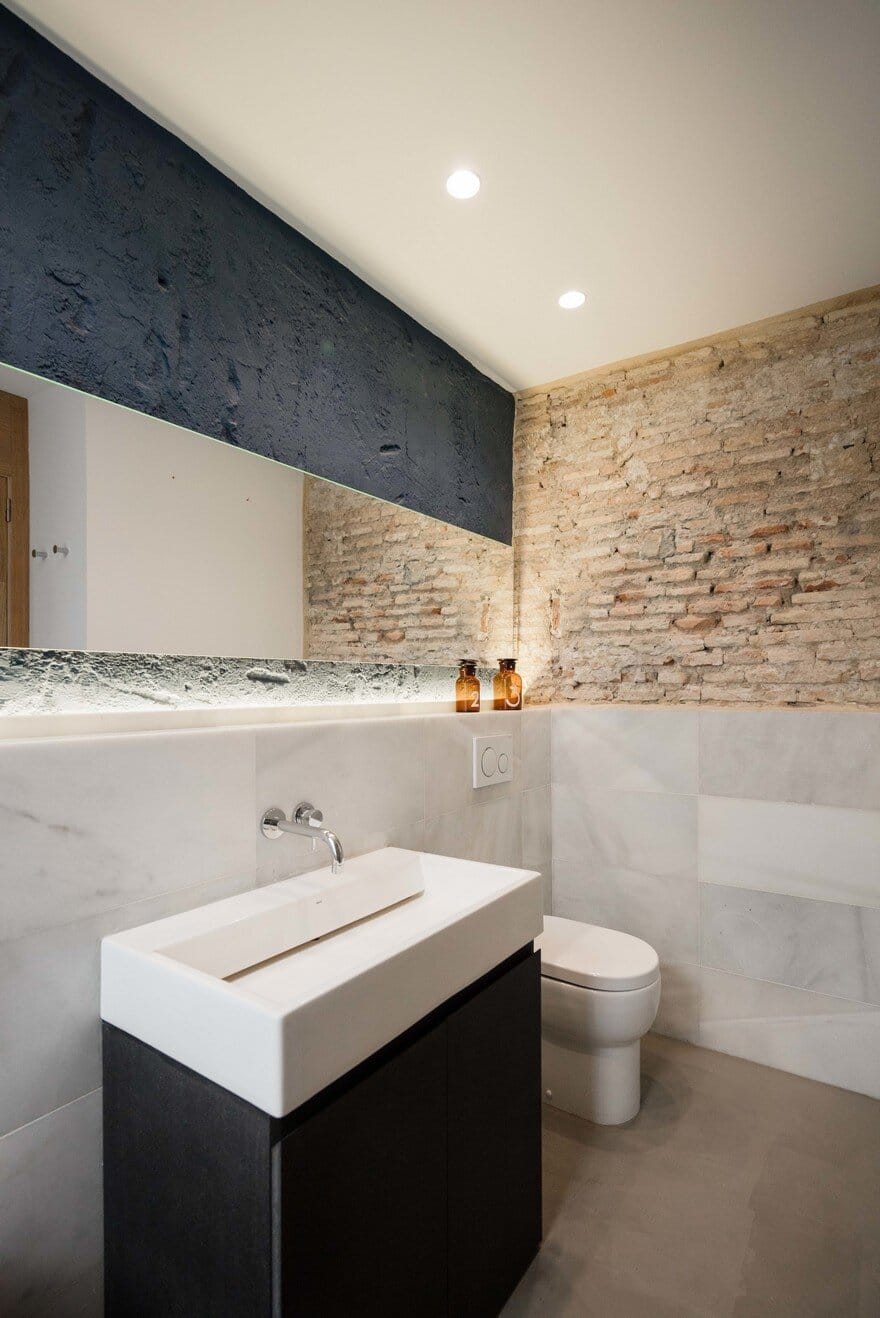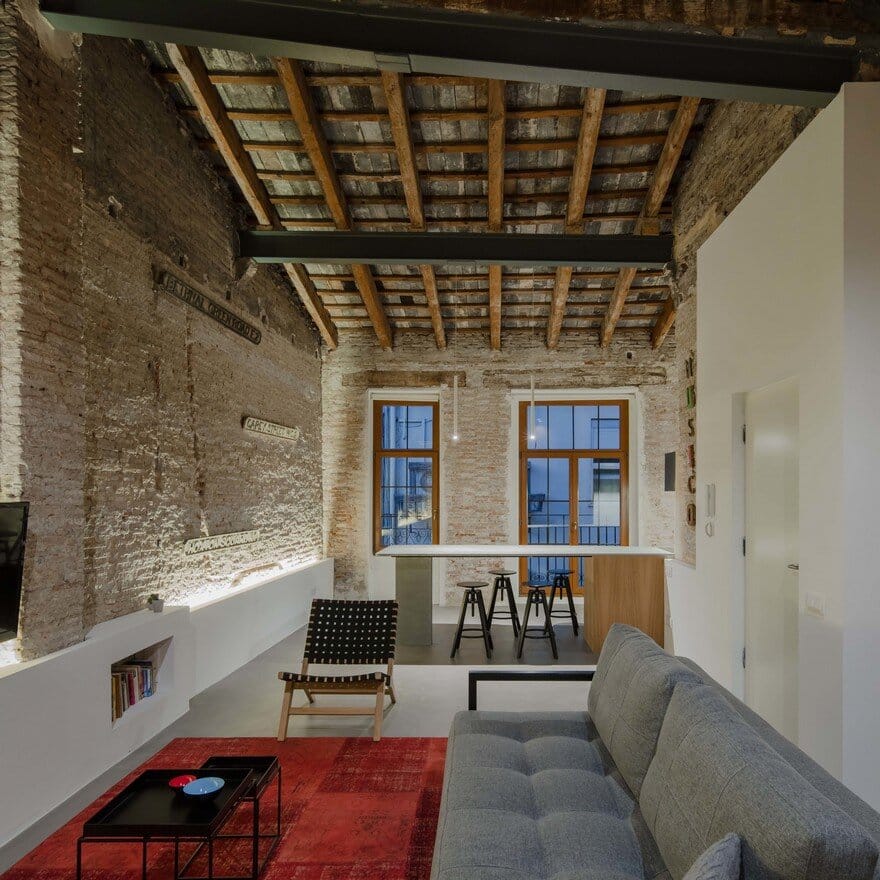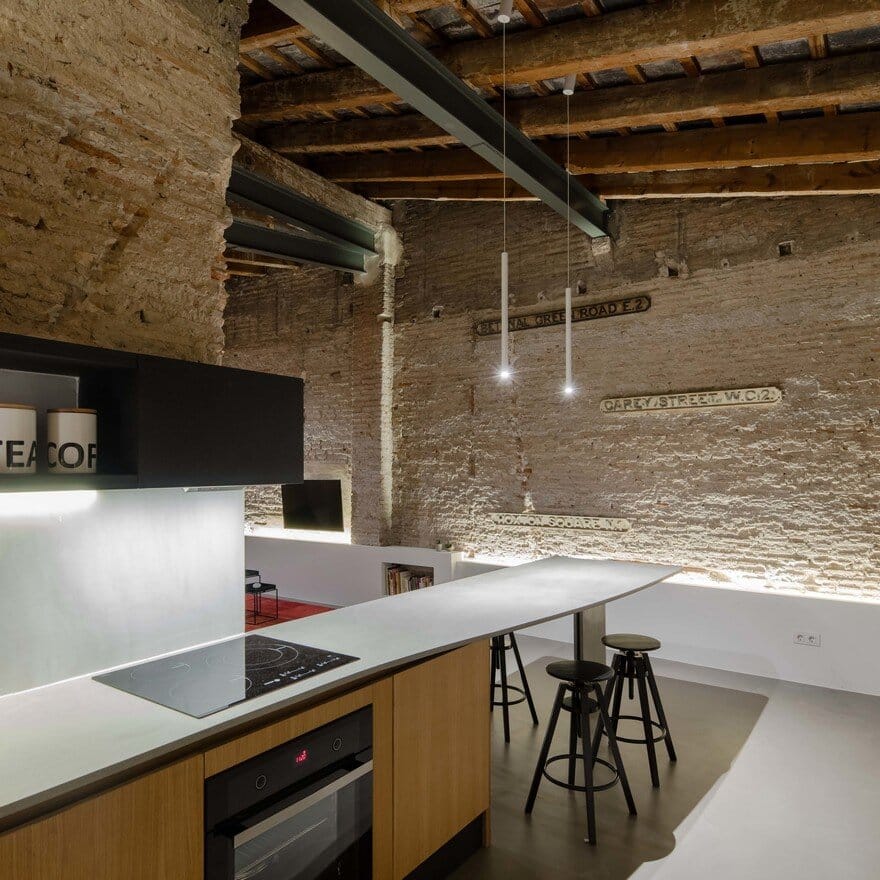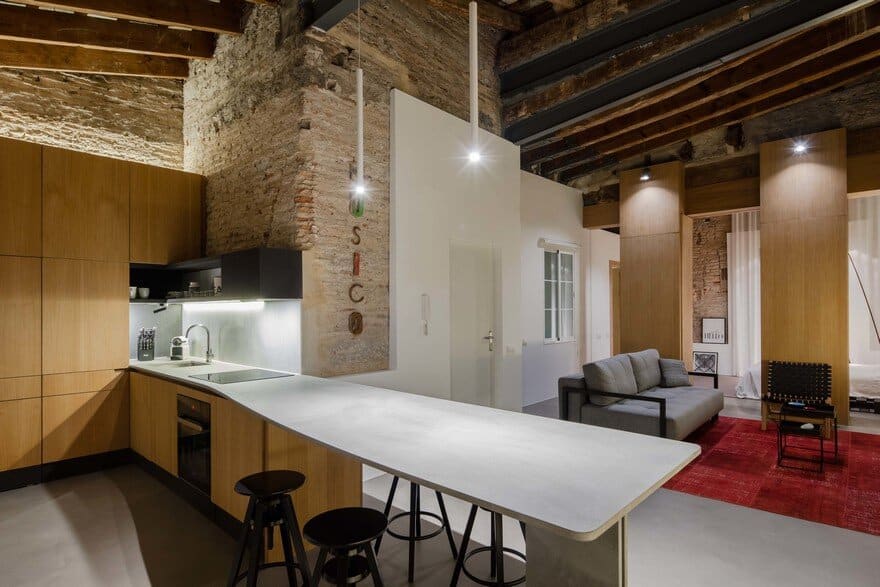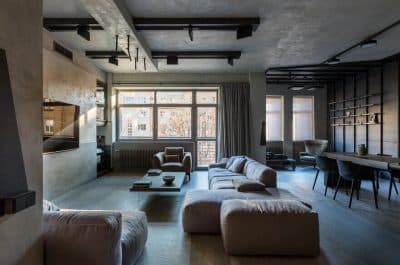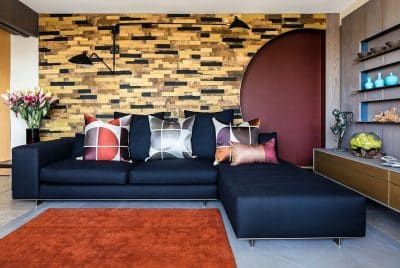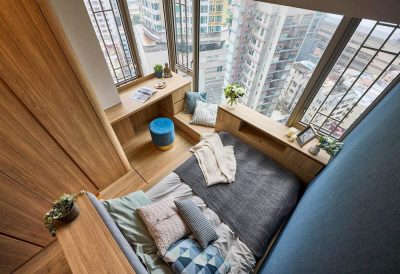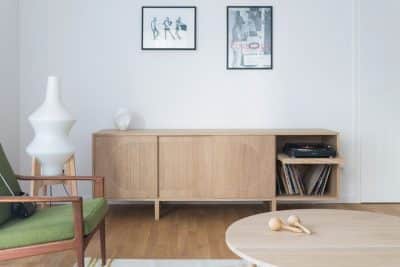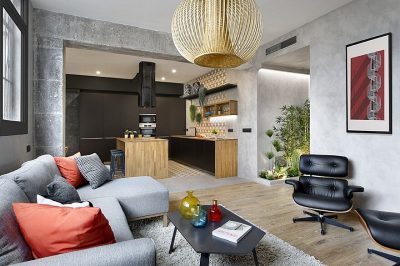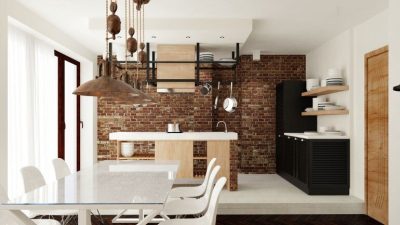Project: Musico Apartment
Architects: Roberto Di Donato Architecture
Location: Valencia, Spain
Year 2017
Photographer: João Morgado
After many years in state of abandon, the Musico apartment was an empty shell when it was bought by the client, creating numerous opportunities but also challenges to the design team.
At a concept level, the main aim was to enhance the character and the materiality of the space by adding only essential new features. To enhance the sense of continuity, “wounds” and layers transformations over the years were retained and displayed.
At a spatial level, the ambition to create distinct, yet fluid, modern living spaces dictated RDDs design philosophy. “We opted to introduce non-conventional partition walls, making the entire depth of the space visible and interconnected”. The ceiling height and original design was deemed a particularly valuable element in the renovation. The structure was kept fully exposed, with all remaining elements of the new design introduced at a lower level, meaning the full sense of space and volume of the apartment can now be fully perceived.
The space is constantly flowing from one area to the other, with the separation between night and day areas provided by two tall wooden elements. These custom designed elements also contain the bedroom wardrobes and three sets of doors allowing varying degrees of privacy.
To emphasize the height and the depth of the Musico apartment, all the new construction elements have been introduced with a clear direction in space. The wooden wardrobes, the full-height white curtains, and the tall ladder are accentuating the verticality of the space. In turn, the long kitchen worktop, the white plasterboard pedestal and its line of light are enhancing the horizontal dimension.
With a reduced space, brief and budget, the project succeeded in introducing a contemporary design language, while enhancing the character and the materiality of the old space. By only adding essential new features, “wounds” and layers of transformations over the years were carefully retained and displayed to enhance the sense of continuity with the building’s history.

